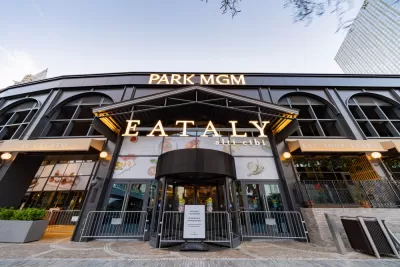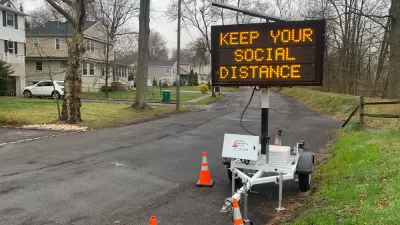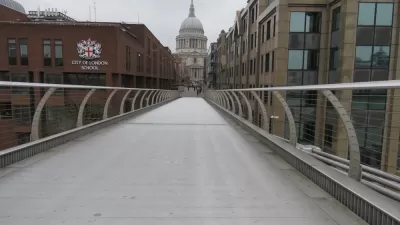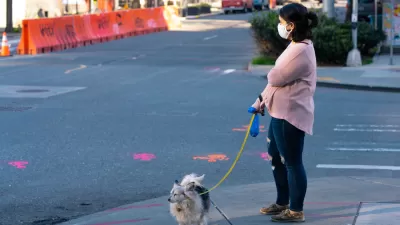A report from Imperial College London, viewed as the "gold standard" by British leaders, was instrumental in compelling the U.S. and the U.K. to enact stronger policies to contain COVID-19. But was it too late?

On March 16, U.K. Prime Minister Boris Johnson announced that the nation needed to take stronger actions to stem the spread of the novel coronavirus.
Last week we asked everyone to stay at home if you had one of two key symptoms: a high temperature or a new and continuous cough.
Today, we need to go further, because according to SAGE [the Scientific Advisory Group for Emergencies] it looks as though we’re now approaching the fast growth part of the upward curve.
And without drastic action, cases could double every 5 or 6 days.
"The low-key British response was driven by a controversial theory embraced by the U.K. government’s top scientists: that the best way to ease the long-term consequences of the coronavirus pandemic was to allow the virus to spread naturally in order to build up the population’s herd immunity," wrote Owen Matthews for Foreign Policy.
On Monday [March 16] night, that theory collided with the facts. A new analysis by immunologists at Imperial College London and the London School of Hygiene and Tropical Medicine of the impact of the coronavirus in Italy suggested that up to 30 percent of patients hospitalized with the virus would require intensive care treatment. Those numbers, if repeated in the U.K., would quickly overwhelm Britain’s state-run National Health Service.
Exactly one week later, the prime minister announced the nation was going into a "virtual lockdown." On Friday, it was reported that Johnson had become the world's first head-of-state to test positive for COVID-19, along with British Health Secretary Matt Hancock.
510,000 fatalities in the U.K; 2.2 million in the U.S.
Mark Landler and It wasn’t so much the numbers themselves, frightening though they were, as who reported them: Imperial College London."
The report warned that an uncontrolled spread of the disease could cause as many as 510,000 deaths in Britain. American officials said the report, which projected up to 2.2 million deaths in the United States from such a spread, also influenced the White House to strengthen its measures to isolate members of the public.
The report [pdf] outlines two fundamental strategies to contain the virus:
- Mitigation, which focuses on slowing but not necessarily stopping epidemic spread—reducing peak healthcare demand while protecting those most at risk of severe disease from infection.
- Suppression, which aims to reverse epidemic growth, reducing case numbers to low levels and maintaining that situation indefinitely. Each policy has major challenges.
"The U.K. government began with a policy of mitigation, aiming to protect the people most vulnerable to COVID-19: people over the age of 70 and people with underlying health conditions, including anyone who receives seasonal flu vaccines," writes Timothy Huzar for Medical News Today. "This initial policy did not involve significant restrictions on the movement of the general population."
[A] suppression strategy would result in significantly fewer deaths and less demand for critical care beds than a mitigation strategy.
In the authors’ words, this means that “A minimum policy for effective suppression is, therefore, population-wide social distancing, combined with home isolation of cases and school and university closure.”
Following China's example
“The U.K. has struggled in the past few weeks in thinking about how to handle this outbreak long term,” Dr. Ferguson said in an interview on Monday, just after the report was released, add Landler and Castle. “Based on our estimates and other teams’, there’s really no option but follow in China’s footsteps and suppress.”
How long?
For the 228 million Americans in at least 25 states, 74 counties, 14 cities, and one territory are being urged to stay home as of March 27, according to The New York Times, the paper advises they get used to social distancing.
"The suppression strategy would need to be in place until an effective vaccine is produced, and the authors predict that this will take at least 18 months," writes Huzar. "Social distancing would need to be in place for most of this time..."
Additional media reports on the Imperial College London analysis can be found in The Washington Post, CNN, and Reuters.
COVID-19 update, March 27: Total cases: 597,335, with the U.S. reporting the most, 104,686. Total Deaths: 27,365, led by Italy, Spain, and China.
Related in Planetizen:
- Britain Shuts Down and India Locks Down to Contain COVID-19, March 27, 2020
Hat tip to SDGreg.
FULL STORY: Behind the Virus Report That Jarred the U.S. and the U.K. to Action

Planetizen Federal Action Tracker
A weekly monitor of how Trump’s orders and actions are impacting planners and planning in America.

Map: Where Senate Republicans Want to Sell Your Public Lands
For public land advocates, the Senate Republicans’ proposal to sell millions of acres of public land in the West is “the biggest fight of their careers.”

Restaurant Patios Were a Pandemic Win — Why Were They so Hard to Keep?
Social distancing requirements and changes in travel patterns prompted cities to pilot new uses for street and sidewalk space. Then it got complicated.

Platform Pilsner: Vancouver Transit Agency Releases... a Beer?
TransLink will receive a portion of every sale of the four-pack.

Toronto Weighs Cheaper Transit, Parking Hikes for Major Events
Special event rates would take effect during large festivals, sports games and concerts to ‘discourage driving, manage congestion and free up space for transit.”

Berlin to Consider Car-Free Zone Larger Than Manhattan
The area bound by the 22-mile Ringbahn would still allow 12 uses of a private automobile per year per person, and several other exemptions.
Urban Design for Planners 1: Software Tools
This six-course series explores essential urban design concepts using open source software and equips planners with the tools they need to participate fully in the urban design process.
Planning for Universal Design
Learn the tools for implementing Universal Design in planning regulations.
Heyer Gruel & Associates PA
JM Goldson LLC
Custer County Colorado
City of Camden Redevelopment Agency
City of Astoria
Transportation Research & Education Center (TREC) at Portland State University
Camden Redevelopment Agency
City of Claremont
Municipality of Princeton (NJ)





























